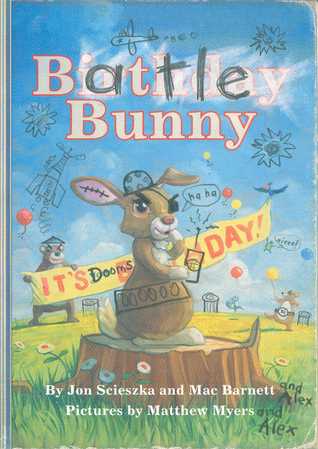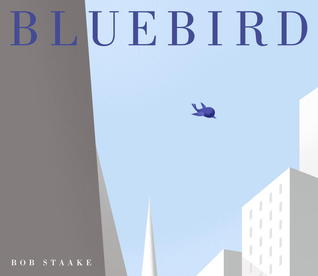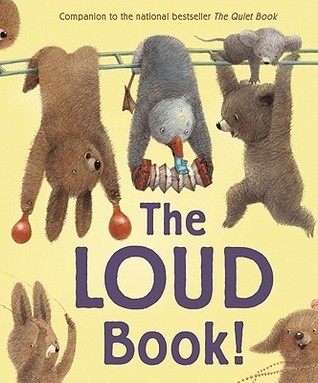Tags
Top 10 Things Picture Books Taught Me by Beth Shaum
What “counts” as reading? Well it turns out that lots of people have an opinion on that question, or more accurately, what doesn’t count as reading. Here’s what I’ve been told doesn’t count as reading, either explicitly or implicitly:
- Picture books
- Audiobooks
- Graphic novels
- YA lit
- Choice reading in class
- Anything other than the canon of old, dead white guys
- Anything a kid might actually enjoy
As recently as just a couple weeks ago, I was celebrating the number of books I’d read in 2013 and someone told me that picture books don’t “count” as books. I probably shouldn’t have been so indignant about such a statement since only a few years ago, I felt the same way. But thanks to this wonderful community of readers known as Nerdy Book Club, I have since seen the light.
So often picture books are looked upon as a lesser form of reading — what you would only give to children learning to read because they’re too young to understand what “real” literature is. But despite the fact that middle school is my grade level of choice, picture books have become an integral part of my classroom community. I have found that when you put picture books in your classroom, no matter what age, students clamor for them — and also learn from them.
So despite the fact that people will say picture books don’t count as reading, I beg to differ. These are the top ten things picture books have taught me as a middle school teacher.
1. Some of the best art being created today is living inside the pages of picture books.
The illustrations in Paul O. Zelinsky’s version of Rapunzel could be hanging in a museum next to Italian Renaissance masters and most people would be none the wiser. And Kadir Nelson? He captures the human spirit like no other artist I’ve ever seen. His illustrations frequently move me to tears. Much of the art in contemporary picture books should be framed and hanging on museum and gallery walls just as much as inside the pages of their books.
2. Picture books give students models of effective writing.
It seems counter intuitive that picture books are models of effective writing given most people’s impressions that they’re only for emergent readers, but I have found that picture books help students navigate writing structures in a much less intimidating, more inviting way than a novel or a poem could.
3. Even middle schoolers love books written for the preschool and kindergarten set.
When I first read Audrey Vernick’s hilarious tale Is Your Buffalo Ready for Kindergarten?, I was immediately charmed by its sassy humor. And because the humor had a bit of a bite to it, I decided to read it to my sixth graders, and wouldn’t you know it, they were over the moon about it. Just because a book is written for little kids doesn’t mean only little kids will love it — as evidenced by the number of sixth graders I often have fighting over who gets to read the newest Elephant and Piggie book first.
4. Sometimes it’s better to be subversive than to follow the rules.
Battle Bunny by Mac Barnett and Jon Scieszka is the hilarious story of a boy named Alex who took a submissive little picture book called Birthday Bunny and turned it into his own incendiary tale he calls Battle Bunny. As I laughed my way through Alex’s act of defiance, I was reminded that sometimes the best assignments students turn in are the ones where they throw caution to the wind and shirk the rules. If I want to encourage risk taking in my students’ writing, I need to find ways to embrace rather than reprimand the occasional subversive moment.
5. Words are not always necessary to tell a beautiful, heartfelt story.
As English teachers words are our bread and butter. We live words. But 2013 was a wonderful year for wordless picture books and because of that, teachers are now starting to stand up and take notice of the possibilities of this form or storytelling in their own classrooms.
6. A picture book’s primary audience is not always little kids.
I used to assume that all picture books were written for kids no higher than 3rd grade. But then I read The Wall by Peter Sis, a multigenre memoir about growing up in communist Czechoslovakia and suddenly realized I’d been unfairly lumping all picture books into the same age group. The truth of the matter is, I doubt very much that a first grader would understand the complex, intricate conflict happening in the scant pages of The Wall. It would be better suited for a high school history course than an elementary classroom.
7. Picture books can teach literary concepts better than that boring story in your literature series.
Need to teach personification? How about hyperbole? I guarantee students are more likely to retain these concepts by reading memorable stories like Carnivores by Aaron Reynolds or No Fits, Nilson! by Zachariah O’Hora than the longer, more complicated stories in your literature anthology.
8. Picture books are great place to start to get students excited about research.
Students excited about research? Isn’t that an oxymoron or something? You can show students that research can be exciting when you read them them stories that are often left out of textbooks, like how an entire town in Ohio stood up to slavery during the Civil War. Or how and where the popular musical style of hip-hop was born. There are so many unknown, untold stories from history hiding inside the pages of picture books.
9. Imitation is not just a form of flattery, it creates confident, capable writers.
When I first started using mentor texts in my middle school classroom it was because of picture books. Since then, I have seen my students’ confidence grow as writers. When I first read The Quiet Book by Deborah Underwood, I asked my students to create their own Loud Book. And wouldn’t you know it, a year later, Deborah Underwood did too. When you give students the opportunity to study and emulate other writers, they begin to speak the language of writers and feel more confident when it’s time to create their own original compositions.
10. Building a community readers happens with picture books just as much as novels.
One of the best book discussions I’ve ever had with my students was after I read them Each Kindness by Jacqueline Woodson. We shouldn’t assume that just because a book has 32 pages and filled with illustrations that you can’t have a quality literary discussion. Coming off the heels of reading Wonder by RJ Palacio, my students made many connections to Woodson’s story of students being less-than-kind to a new classmate, most without my prompting.
While not currently teaching, Beth Shaum will always be a middle school teacher at heart. She currently lives in Canton, Michigan and is the social media coordinator for NCTE. Someday soon she hopes her next teaching adventure will be to have her own high school classroom where she will undoubtedly share lots of picture books with her students and hopes they will fight over who gets to read the newest Elephant and Piggie book first. Follow her on Twitter: @BethShaum.

















I love this list! I love picture books of course, and I think they are reading, even though APPARENTLY I’m not in elementary school any more. (Doesn’t stop me from acting like I’m 7.) I feel like the subtext of your list is the magic of picture books — they are more complicated than they look, and a much easier sandwich to chew on for people trying to grasp a new concept than handing them a textbook or anything at all with a page full of words. (Although, of course, there’s a time for those fun longer books too!)
I absolutely agree that picture books have many great reasons to be part of our reading worlds. I read them to my students and my daughter and sometimes linger over them myself. The biggest reason I don’t keep track of them is that by drawing the line between picture books and everything else is that there is less for me to keep track of. I just run out of hours in the day and this is something I have chosen to ‘let go’. I am so glad some of the rest of you create great lists and posts to use as reference!
Great article!
Hooray for picture books! Thanks for reminding us of their multi-faceted intrinsic value. Great post.
Great post, Beth! I’d like to talk to you more about how I can instill this belief into pre-service middle-level teachers.
So grateful!
Yes, yes, yes!!!! Thank you for writing this post. I’m going to make sure I bookmark and keep it safe because I will be sharing it. My first reason I give people for loving picture books is your number one. I explain they are like mini pieces of priceless art for a bargain price. I have HUNDREDS of picture books collected in my classroom, and I love them, love them, love them for all the reasons you gave. So glad you featured JOURNEY. My favorite of 2013!
Beth – Thank you for this wonderful and amazing post. Every word of it was so true. Can’t wait to share it with others.
Pingback: Blog Roll: Best Blogs to Follow | kelseyempfield
Thanks for all the great examples! I’m going to keep my eye out for picture books from now on!
Definitely a keeper post! What a wonderful list of reasons PB’s are real books. I used them in 5th grade years ago when I was teaching, and I think they belong at every reading level. Especially now when pictures, images, graphics, design is deeply and forever entrenched in ALL our communications at ALL ages. A text-less picturebook says much, and the story can be envisioned perhaps more easily by today’s children than those from my childhood days.
This post speaks to my heart. I spent 11 years teaching high school English, and I used picture books in my classroom every chance I got with great success. I then became an elementary librarian, so I was able to take my experience with picture books to another level. Now that I’m a high school librarian, I make it my mission to go into classrooms and share picture books with teens. They LOVE it (and so do the teachers). My fellow librarian and I have a blog about the lessons we do with picture books in the high school classroom: http://hspicturebooks.blogspot.com/
Thanks for affirming that teens (and adults) NEED picture books in their lives!
Pingback: The Power of the Picture Book | Finding Fourth Grade
Winning points with tremendous examples. Well done!
Pingback: Read Like The Wolf Eats | GrowingWriters.com
“picture books don’t “count” as books” ?!?!? Oh my, who was the person who dared to say that?!?!
Love, love, love your article. So many lovely points, so many great examples. The picture book is a thing to be celebrated on so many levels!
Reblogged this on Darlene Beck-Jacobson and commented:
Love this post and the books reviewed in it!
I so don’t get why in certain circles picture books don’t get the recognition they deserve. I realize that we’ve sadly hit the generation of tiger parents with the earliest possible push to chapter books, but there’s something so wonderful about what picture books do for kids–not to mention adults! Adults never forget the picture books they read as kids. (I don’t think the same can be said for other kinds of books.) Terrific post, Beth!
Kudos to Beth! Picture books have so many wonderful uses – they foster communication and are thought provoking – especially for emergent readers. I love doing “picture walks” with students and my R.E.A.D. partner, “Maggie”.
Beth, this really spoke to me. I teach Adult and often suggest to the students that they should go to the library and browse children’s and young people’s sections – but I didn’t think of doing that myself, updating my acquaintance with picture books and using some myself in class….MAYBE I had a hidden prejudice against “picture books”…too childish for adults? (Once I did a “book report” activity and took out children’s books for Black History Month – it was very well received, your post reminded me to do this type of activity again…) Can’t wait to get to the library….(not sure about sitting on the teenytiny chairs…!)
Apart from the accessibility of the text I think everyone will enjoy/love the art – especially those for whom this mode of representation is so important.
Claudie, this is Shawna’s post! I put it on the site for her! 🙂
Oops – Adult ESL….
Excellent post! Some of my favorite pieces of literature are picture books that my 4th grade co-teacher and I have used to teach reading lessons. Kids of all ages can learn a great deal from picture books.
Thanks too for providing me with some new titles to add to my library.
Reblogged this on sward5355 and commented:
I have always loved pictures for what they teach all of us about writing and reading and illustrating. I offer this repost of Beth’s blog because I couldn’t have said it any better.